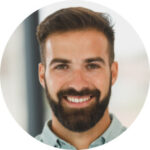Apart from its breathtaking natural beauty, the Dev Bhoomi region offers a delectable cuisine that will leave gourmands satisfied. For everyone who has a taste for desserts, Himachal Pradesh also offers a variety of dishes to indulge in, and one of them is one popular traditional dish named Seera Himachali Dish.
What is Seera?
Seera, or Sheera, is a traditional Himachal Pradesh, India, sweet dish. It is cooked primarily using wheat grains and is well-known for its sweetness and unique, lengthy preparation technique. Another version cooked with semolina (suji) in the rest of India is referred to as Suji ka Halwa, but authentic Seera Himachali is cooked with whole wheat grains fermented and traditionally processed.
Seera in Himachali households is not just a dish; it’s a treasure. It forms a part of rituals, becomes an offering to God, and is lovingly prepared during family occasions and festivals. Whether on a winter morning or on a community function, Seera never misses its place on the table.
Traditional Preparation of Seera Himachali Dish
In contrast to quick semolina halwa, Himachal’s traditional Seera is a labor-intensive, multi-day preparation involving whole wheat grains. Here’s how to make it:
Step-by-Step Traditional Process:
- Soaking the Grains: Start soaking wheat grains in water for approximately one week. Renew the water daily to avoid fermentation odors and maintain the grains fresh.
- Grinding and Straining: Grind the wheat grains soaked for a week into a fine paste, then add water to the paste and strain using a muslin cloth. This yields a white liquid.
- Draining and Drying: Suspended this white liquid in a muslin cloth and hang to drain. It turns into a semi-solid form. Crush this into small bits and sun-dry until solid. These solids that have turned into solids are known as Seera.
This is the traditional way, which is Himachal-specific and provides a very unique taste and texture that will not be obtained with the quick semolina version.
Cooking the Seera
After you have dried Seera material, this is how you transform it into a delicious sweet dish:
Ingredients:
- Dried Seera paste (from above process)
- Sugar (to taste)
- Ghee (clarified butter)
- Water
- Crushed cardamom pods
- Optional: Saffron, dry fruits (cashews, almonds, raisins)
Method:
- Prepare the Mixture: Combine a portion of Seera and sugar with water to create a smooth flowing consistency.
- Heat Ghee: Heat ghee in a pan for about 2 minutes.
- Cook the Seera: Add the Seera-sugar-water mixture to the hot ghee and continue stirring. Cook until the mixture is thick and light golden brown in color.
- Flavoring: Add crushed cardamom, saffron (optional), and garnish with fried dry fruits.
- Serve Hot: Share with friends and family, over breakfast, lunch, or as a celebratory dessert.

Cultural Significance in Himachal Pradesh
Seera Himachali Dish has its roots in the religious and cultural practices of the region. It has also been served as prasad in temples, prepared on auspicious days like Makar Sankranti and Diwali, and consumed in large quantities in mass community functions. In the hills, it’s not just a dessert but a dish that brings generations together.
Also read: Why Visit Tosh Himachal Pradesh?
Health Benefits of Seera Himachali Dish
While Seera is a sweet dish, it has some health and nutritional advantages if consumed in moderation:
- Energy Boost: As it is full of complex carbohydrates of wheat and sugar, it provides long-lasting energy.
- Nutrient-Rich: Wheat is full of fiber, vitamins (especially B-complex), and minerals.
- Sustained Fullness: Its slow-digesting carbs keep you full for longer.
- Digestive Health: Ghee enhances digestion and provides good fats.
- Mood Enhancer: Its comforting, sweet taste is soothing and may actually reduce stress levels.
Variations and Modern Twists
While the traditional preparation remains a favorite, modern home cooks also prepare quicker versions using suji (semolina). Here are some creative variations:
- Milk Instead of Water: Makes it creamier and richer.
- Jaggery Instead of Sugar: Provides an earthy flavor and slightly healthier alternative.
- Coconut or Rose Water: Provides aroma and flavor.
Seera and Community Bonding
In Himachal, preparation and serving Seera is typically a group activity. It’s prepared in large batches at temple festivals, weddings, or community gatherings, uniting communities. The process, though time-consuming, becomes a celebratory event in itself.
Why You Should Try the Seera Himachali Dish
Whatever may be your leaning towards gourmet tastes of local delicacies or what may be your hill origins, Seera is a food item you simply can’t do without. It is a testimony to tradition, to patience, to passion for humble, uncomplicated food. The texture, aroma, and richness of its tradition make it one of the favourite foods of Himachal Pradesh.
Conclusion
Seera Himachali Dish is a true legacy, flavor, and warmth. Generation upon generation, it has been a household favorite among families in Himachal and other places. Either you go in for the authentic wheat variety or the quicker suji variety, the experience remains the same: comfort, tradition, and genuine flavor of Himachal.
Stay connected with HimGlide to find out more real recipes, best-kept secrets, and stories from the heart of Himachal Pradesh.
FAQ’s
What is Seera made of?
Seera prepared from whole wheat grains soaked, grinded, sieved, and dried in sun and then cooked in ghee and sugar.
Is Seera the same as Halwa?
While both are sweet dishes, Himachali Seera traditionally requires utilizing whole wheat, whereas suji-based halwa is quick to prepare.
Can Seera be stored for later use?
Yes, dried Seera base can be stored in airtight boxes and eaten later by being rehydrated and cooked.
Is Seera healthy to eat?
Seera is rich in healthy fats, energy, and fiber. It is capable of satisfying one’s appetite as well as being nourishing if eaten moderately.







